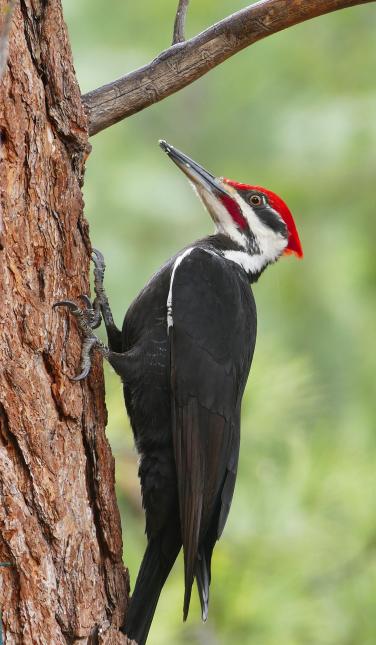Observing Woodpeckers in Florida: Variety Diversity and Distribution
Observing Woodpeckers in Florida: Variety Diversity and Distribution
Blog Article
Discover the Interesting World of Woodpeckers: Everything You Need to Know
The world of woodpeckers is a world full of one-of-a-kind actions, elaborate adjustments, and a varied array of types. From their habitats and circulation patterns to their feeding routines and specialized anatomical attributes, woodpeckers have long astounded the rate of interest of ornithologists and nature enthusiasts alike. Comprehending the details of these fascinating birds gives a glimpse right into the intricate interaction in between their biology and the setting. As we check out the world of woodpeckers further, we uncover a wide range of info that loses light on their value in ecological communities and the difficulties they deal with in an ever-changing world.
Woodpecker Habitats and Distribution
In North America, for example, woodpeckers can be found in both coniferous and deciduous woodlands, using their solid beaks to forage for insects and develop nesting tooth cavities in trees. In Africa, certain woodpecker types have actually adapted to arid atmospheres, such as the acacia timberlands, where they play an important role in managing insect populaces.

Feeding Behaviors and Diet Plan
Amongst the different elements of their habits, woodpeckers show distinct feeding behaviors and dietary preferences. These birds are mostly insectivores, with a diet that consists of ants, beetles, caterpillars, and other bugs discovered in trees. Woodpeckers utilize their strong beaks to drill into the bark of trees, probing for bugs and larvae concealed beneath the surface. Along with insects, woodpeckers additionally consume nuts, seeds, fruits, and sap. Some types have actually specialized tongues with barbed ideas that help them draw out pests from gaps in timber.
Woodpeckers are understood for their drumming habits, which offers not only to connect with other woodpeckers but additionally to locate food. The fast drumming sound is created by the bird pecking on powerful surface areas like dead trees or steel poles. This behavior can attract pests hidden in the wood, permitting the woodpecker to detect their existence and prey on them.
Distinct Adaptations for Tree Climbing
In their skilled quest of pests concealed within tree bark, woodpeckers have advanced amazing physiological features that furnish them with unique adjustments for efficient tree climbing. Woodpeckers have strong neck muscular tissues and a special skull structure that soak up the influence of consistent pecking, enabling them to climb up up and down without triggering harm to their brains. These adaptations showcase the extraordinary transformative design that makes it possible for woodpeckers to navigate trees with precision and efficiency.
Diverse Woodpecker Variety Worldwide
With over 200 various types spread throughout various habitats worldwide, the family members of Picidae encompasses an impressive variety of woodpeckers. These birds can be found in forests, timberlands, savannas, and even urban areas, showcasing their versatility to various settings. From the iconic Northern Flicker in North America to the vibrant and elusive Crimson-backed Flameback in Asia, each woodpecker species exhibits unique qualities in terms of tuft, actions, and habitat preference.
Woodpeckers differ significantly in dimension, with the small Downy Woodpecker gauging around 6-7 inches in size, while the powerful Lineated Woodpecker can rise to 17 inches - Woodpeckers in Florida. Their beaks additionally come in different shapes and sizes, mirroring their feeding practices. Some varieties specialize in extracting pests from tree bark, like the Acorn Woodpecker, while others, such as the Black-cheeked Woodpecker, feed upon fruits and seeds

Preservation Initiatives and Obstacles
Preservation efforts for woodpecker populations are essential in alleviating the article effect of habitat loss and other threats facing these diverse bird varieties. Woodpeckers face various difficulties to their survival, mainly due to logging, urbanization, environment modification, and intrusive varieties. To attend to these issues, conservation initiatives concentrate on securing and bring back woodpecker environments, applying sustainable forestry practices, and elevating understanding regarding the importance of these birds in communities.
One considerable difficulty in woodpecker preservation is the fragmentation of their environments, causing isolated populations that are extra prone to extinction - Woodpeckers in Florida. Guardians function to create wild animals corridors and safeguarded locations that attach these fragmented habitats, permitting woodpeckers to relocate in between various locations for feeding, reproducing, and shelter

Verdict
In verdict, great post to read woodpeckers are fascinating birds with distinct adjustments for tree climbing and feeding habits. More research and preservation actions are needed to make certain the survival of check my reference woodpeckers in the wild.
Report this page